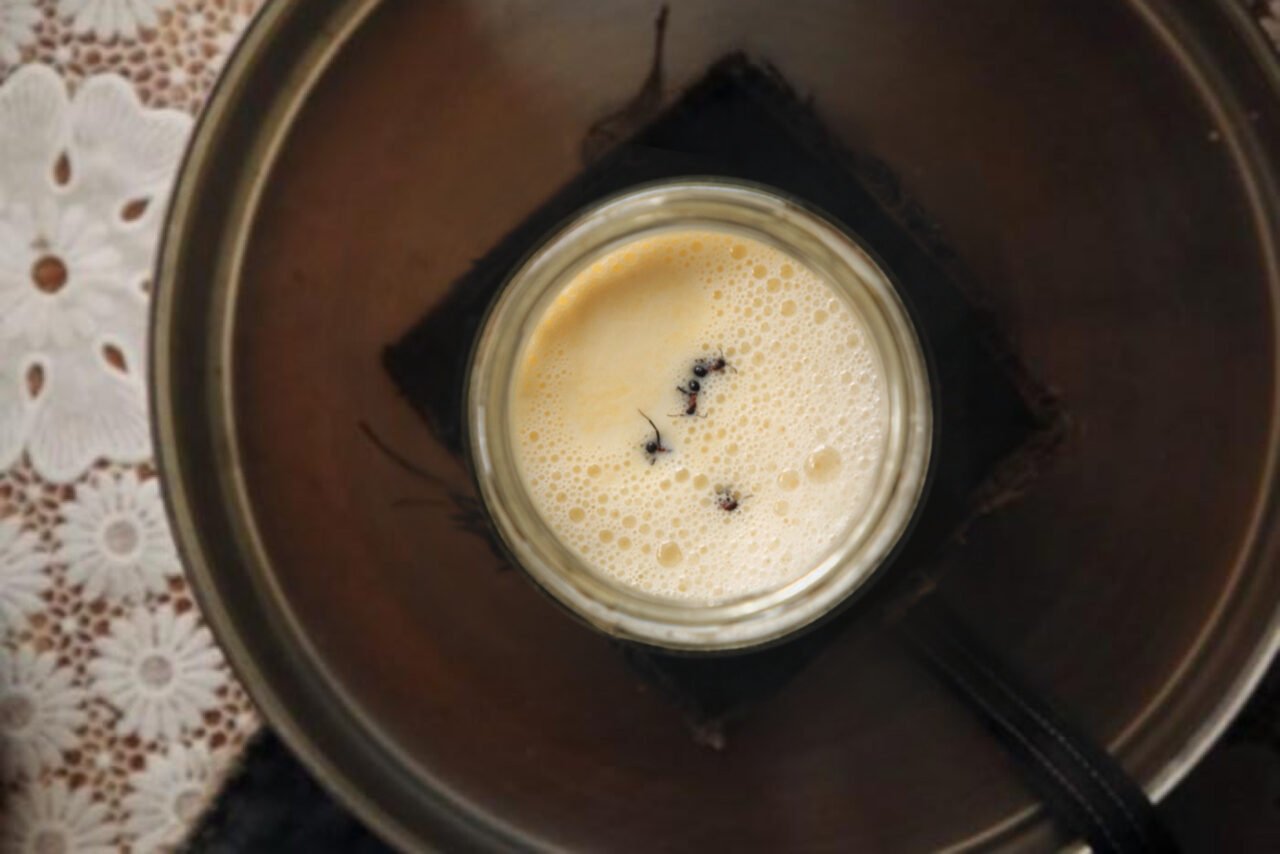Science
Scientists Collaborate with Chefs to Revive Ancient Ant Yogurt Recipe

Researchers at the Technical University of Denmark have successfully recreated an ancient yogurt recipe from Bulgaria that includes an unconventional ingredient: ants. Documented in a recent paper published in iScience, this unique culinary project involved collaboration between microbiologists and chefs from the Michelin-starred restaurant, The Alchemist.
The study uncovers the fermentation process facilitated by the red wood ants, scientifically known as Formica rufa, which are native to the region. These ants contain specific acidic compounds that play a crucial role in transforming warm milk into yogurt. The resulting product reportedly has a “slightly tangy taste with mild herbaceousness and pronounced flavors of grass-fed fat,” as noted by Leonie J. Jahn, the study’s senior author.
Reviving Culinary Traditions
This innovative project stemmed from informal discussions about traditional recipes, much like the oral history of the yogurt itself. During a collaboration with The Alchemist, Jahn learned about a unique ant yogurt served at the restaurant. This led her to connect with a PhD student whose Bulgarian village still practices this ancient fermentation technique.
The researchers ventured to Bulgaria, where they engaged with local villagers to understand the recipe’s intricacies. The community assisted in identifying the right ant species, which are essential for the yogurt-making process. Once back in Denmark, the team added four live ants to a jar of warm, raw milk, covered it with cheesecloth, and placed the jar in an ant mound for fermentation. Within a day, the milk began to sour and transition towards yogurt.
The Science Behind Ant Yogurt
Following the successful fermentation, the researchers conducted a detailed analysis of the microbial activity involved in the yogurt-making process. They discovered that the ants contributed various compounds essential for yogurt production. Notably, the formic acid that ants carry for self-defense aids in coagulating the milk, while the ants’ natural microbiome enhances the fermentation process.
Interestingly, the researchers found that using live ants was critical for the proper fermentation of the yogurt. Attempts with frozen or dehydrated ants failed to achieve the same results. This reinforces the importance of using fresh ingredients in traditional recipes.
The collaboration with The Alchemist resulted in the creation of three distinct dishes: an ice cream ant-wich, goat milk mascarpone enhanced with ant additives, and a milk wash cocktail curdled with ants. The chefs indicated that dehydrated ants worked well for their recipes, except for the ant-wich.
Despite the intriguing findings, the researchers caution against attempting to replicate this process at home. Ants are not widely recognized as a food product in Europe, and consuming random ants could pose health risks due to potential parasites.
This research not only emphasizes the fascinating interplay between ancient culinary traditions and modern science but also highlights the interconnectedness of humans with other species in our food systems. As Jahn remarked, yogurt serves as a reminder of our dependence on various life forms—cows, plants, ants, and microbes—encouraging a deeper appreciation of the natural world through taste and texture.
-

 Lifestyle3 months ago
Lifestyle3 months agoLibraries Challenge Rising E-Book Costs Amid Growing Demand
-

 Sports3 months ago
Sports3 months agoTyreek Hill Responds to Tua Tagovailoa’s Comments on Team Dynamics
-

 Sports3 months ago
Sports3 months agoLiverpool Secures Agreement to Sign Young Striker Will Wright
-

 Lifestyle3 months ago
Lifestyle3 months agoSave Your Split Tomatoes: Expert Tips for Gardeners
-

 Lifestyle3 months ago
Lifestyle3 months agoPrincess Beatrice’s Daughter Athena Joins Siblings at London Parade
-

 World2 months ago
World2 months agoWinter Storms Lash New South Wales with Snow, Flood Risks
-

 Science3 months ago
Science3 months agoTrump Administration Moves to Repeal Key Climate Regulation
-

 Business3 months ago
Business3 months agoSoFi Technologies Shares Slip 2% Following Insider Stock Sale
-

 Science3 months ago
Science3 months agoNew Tool Reveals Link Between Horse Coat Condition and Parasites
-

 Science2 months ago
Science2 months agoSan Francisco Hosts Unique Contest to Identify “Performative Males”
-

 Sports3 months ago
Sports3 months agoElon Musk Sculpture Travels From Utah to Yosemite National Park
-

 Science3 months ago
Science3 months agoNew Study Confirms Humans Transported Stonehenge Bluestones









